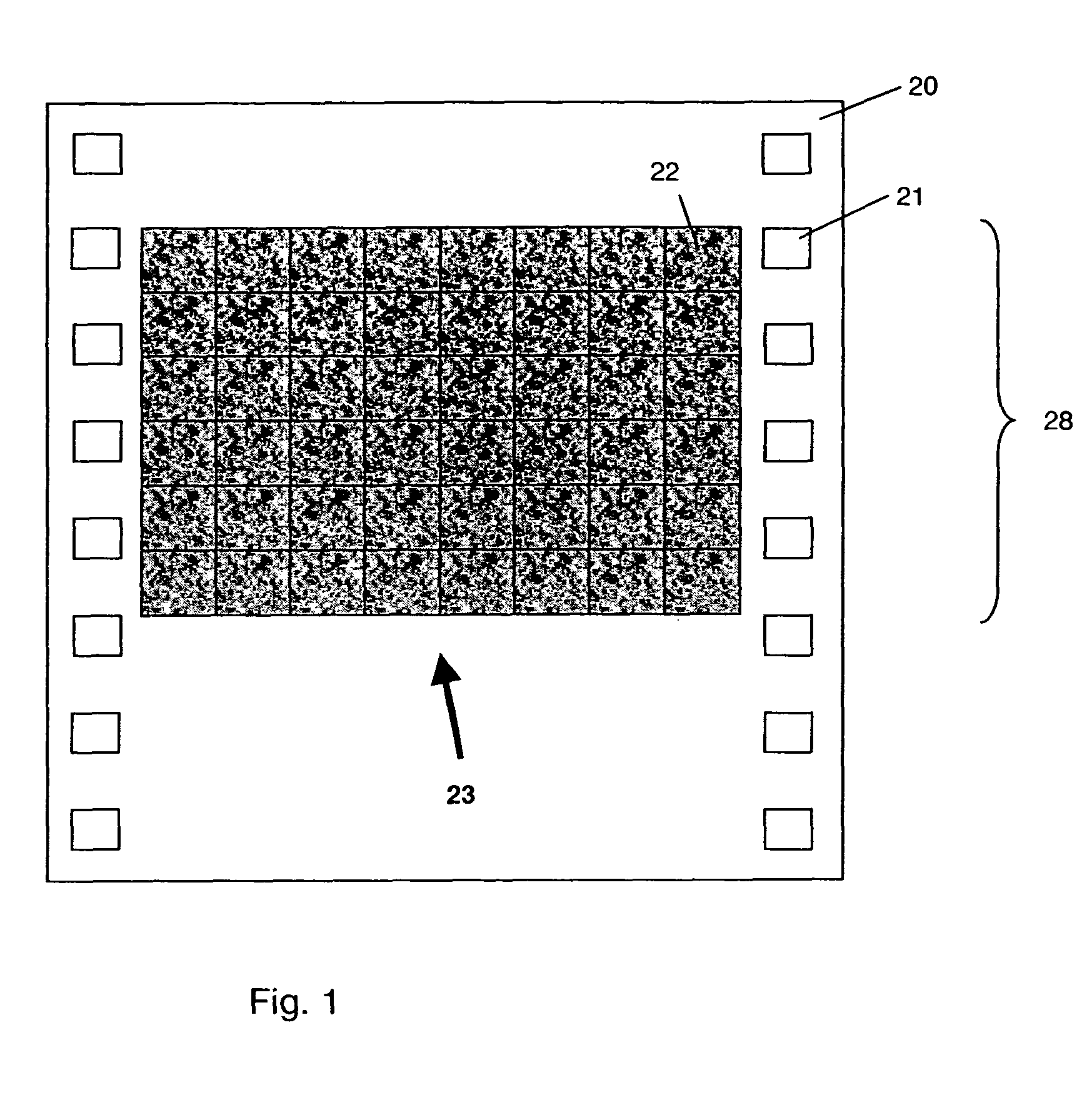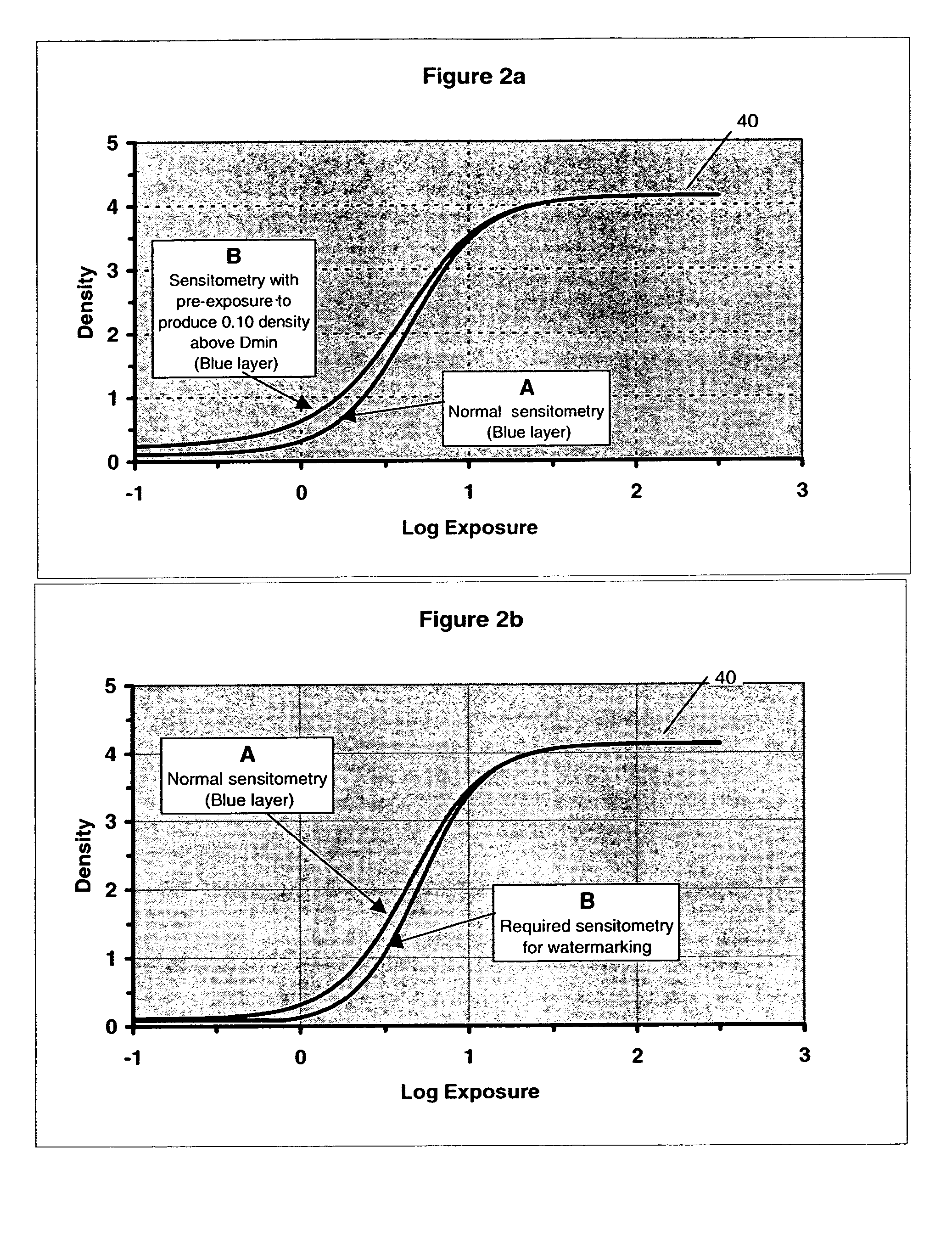Method and apparatus for exposing a latent watermark on film
a technology of imaging film and watermark, applied in the field of providing watermarks on imaging film mediums, can solve the problems of affecting the image quality, and affecting the overall film viewing experience, so as to simplify the design complexity and cost, reduce the impact of visible watermarks, and achieve sufficient speed
- Summary
- Abstract
- Description
- Claims
- Application Information
AI Technical Summary
Benefits of technology
Problems solved by technology
Method used
Image
Examples
Embodiment Construction
The present invention is directed in particular to elements forming part of, or in cooperation more directly with an apparatus in accordance with the present invention. It is to be understood that elements not specifically shown or described may take various forms well known to those skilled in the art.
Referring to FIG. 1, there is shown a conventional area coverage watermark 23 within an image frame 28. A film 20 has perforations (perfs) 21, where a typical image frame, including the interframe gap, covers four perfs. Area watermark 23 consists of an 8×6 array of identical tiles 22, each tile 22 is repeated multiple times within image frame 28. An array of tiles 22 covers the full aperture of image frame 28 and also covers any gap between image frames 28. Entire area watermark 23 of 8×6 tiles 22 may be exposed simultaneously or may be formed by exposing a single row of tiles 22 at a time. Using such a method, after exposure of a row of tiles 22, film 20 is transported the length...
PUM
 Login to View More
Login to View More Abstract
Description
Claims
Application Information
 Login to View More
Login to View More - R&D
- Intellectual Property
- Life Sciences
- Materials
- Tech Scout
- Unparalleled Data Quality
- Higher Quality Content
- 60% Fewer Hallucinations
Browse by: Latest US Patents, China's latest patents, Technical Efficacy Thesaurus, Application Domain, Technology Topic, Popular Technical Reports.
© 2025 PatSnap. All rights reserved.Legal|Privacy policy|Modern Slavery Act Transparency Statement|Sitemap|About US| Contact US: help@patsnap.com



